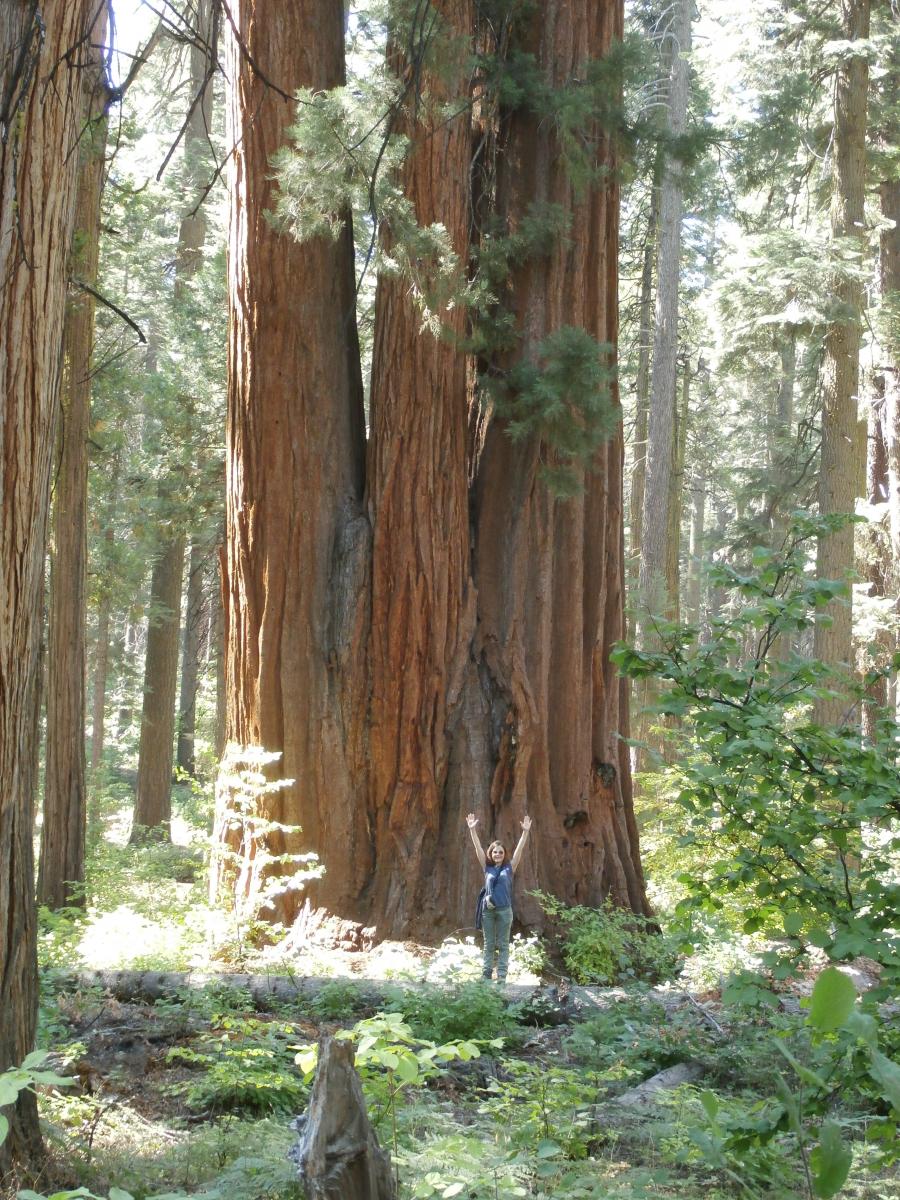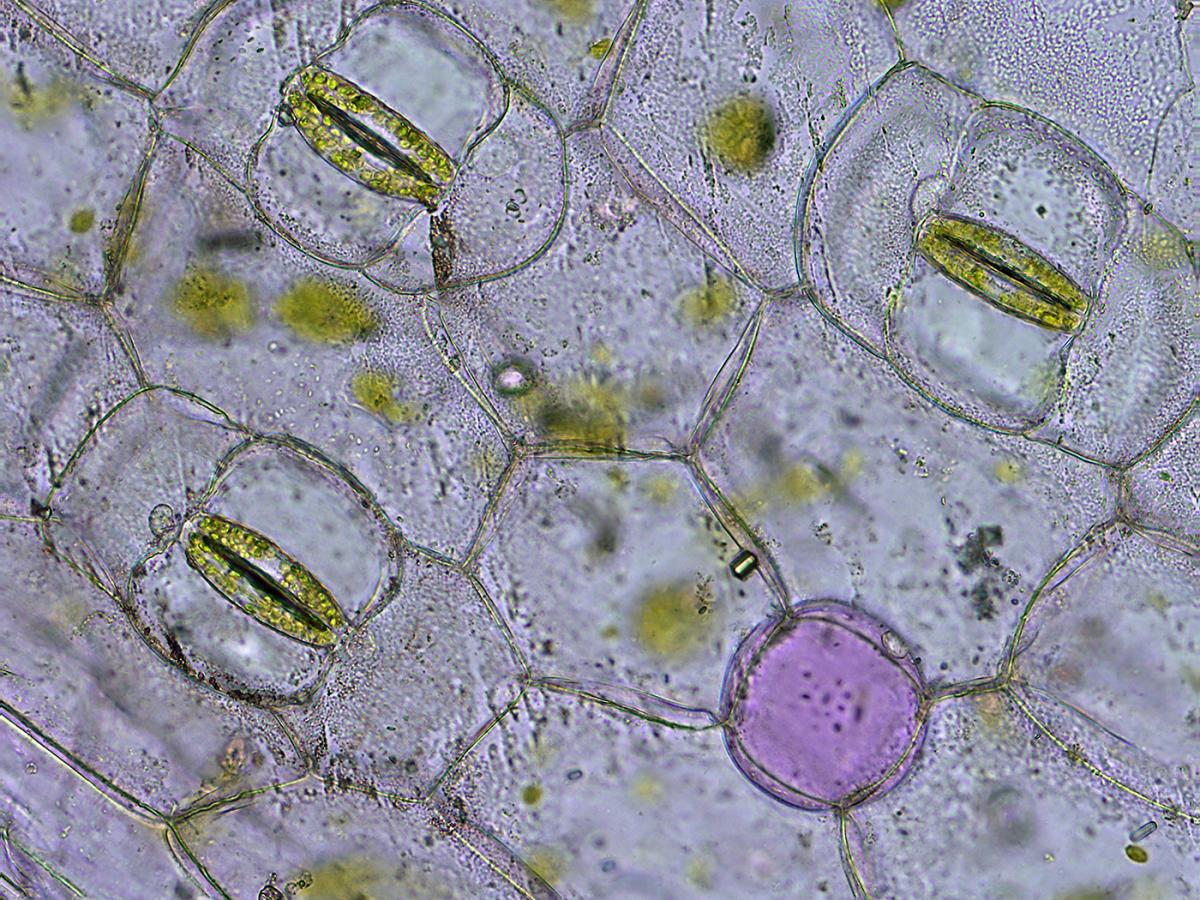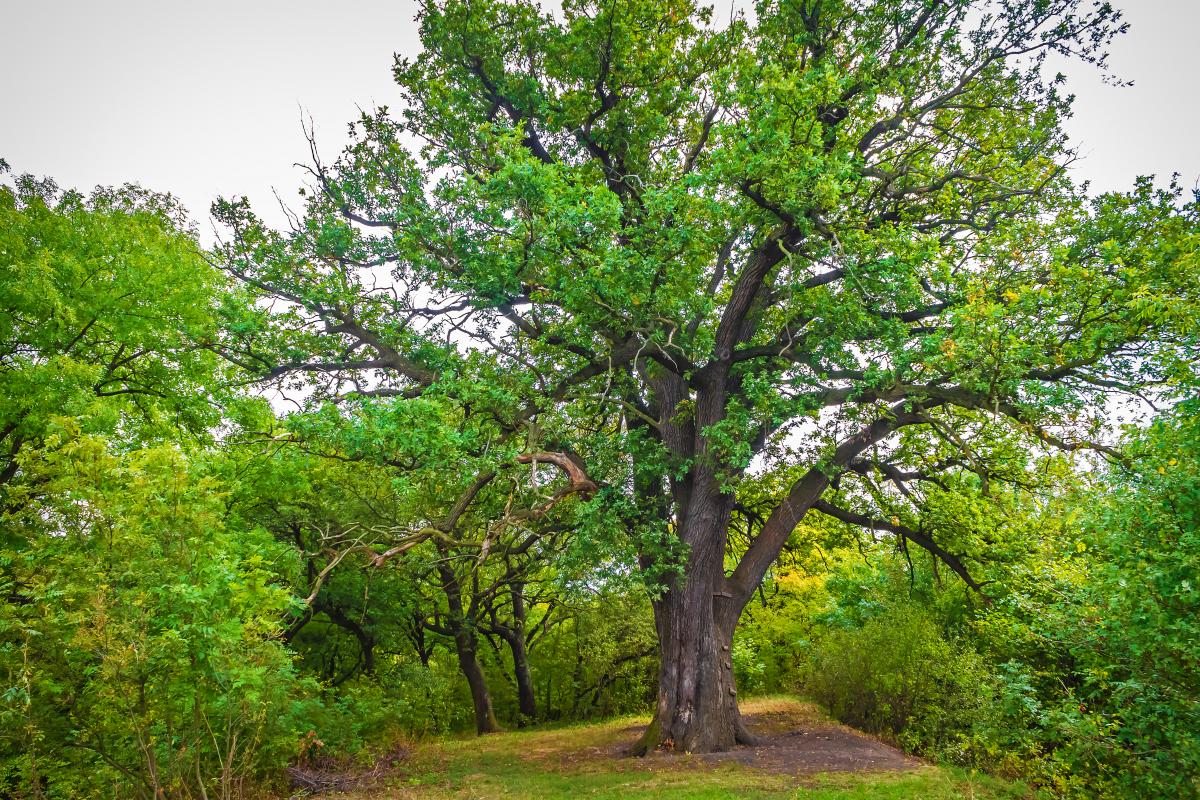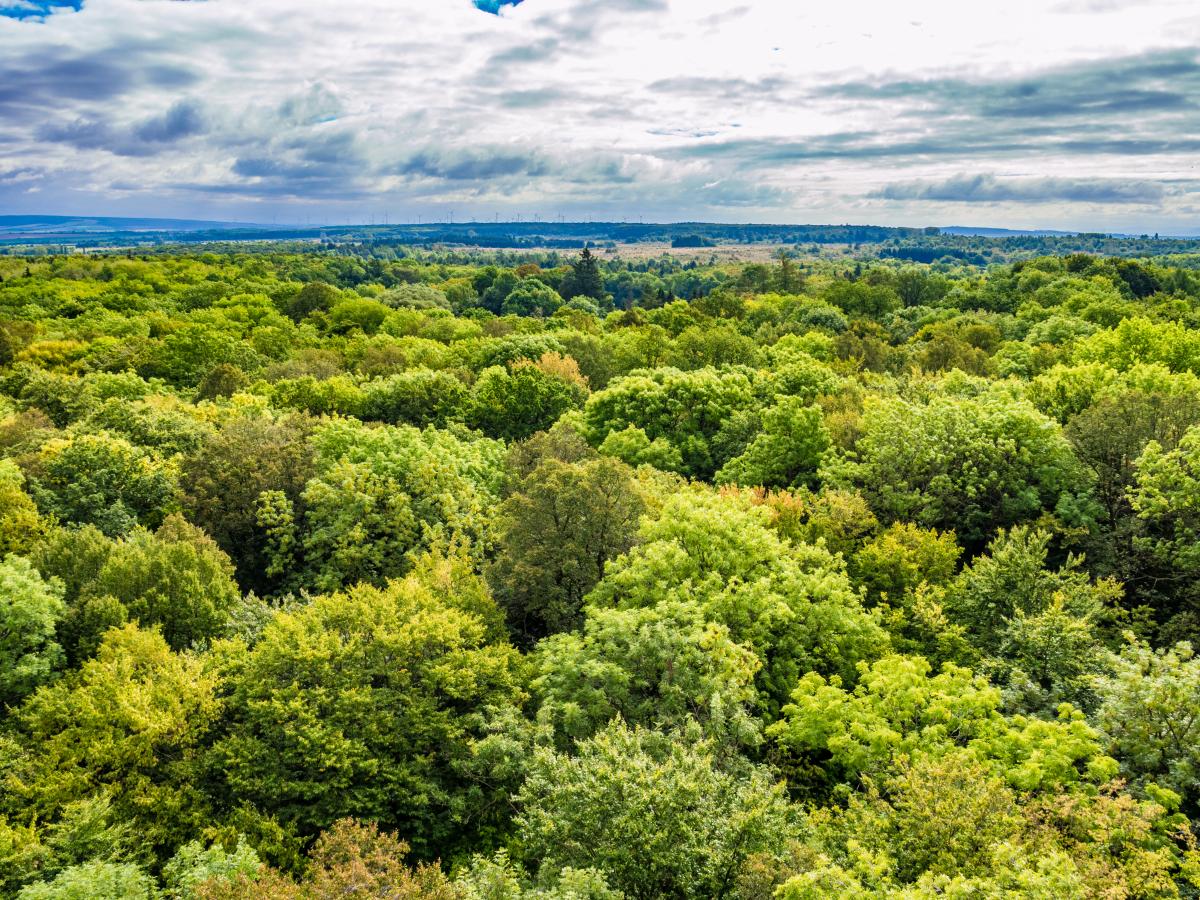The secret life of forests Understand article
New research is revealing the previously unknown beneficial effects of tree canopies – and the secret life within them.

sequoia trees at the
Calaveras Big Trees State
Park in California, USA
Katie Jennings/Rossella
Guerrieri
When you walk through a forest, what is it about the trees that most impresses you? For me, it’s the green canopy of leaves, with branches reaching out towards the sky. I remember when I saw a giant sequoia tree for the first time, at the Calaveras Big Trees State Park in California, USA. What really impressed me was the high evergreen canopies of these trees – which can be up to 3500 years old – receiving water from roots almost 100 metres below. In my career as a tree ecophysiologist, I am fascinated by tree canopies, which are important not only for single trees, but also for forests – and for all of us.
Tree canopies make a huge contribution to mitigating global warming and climate change by taking in carbon dioxide through their leaves, which they use in photosynthesis to produce sugars. Thanks to this activity, forest canopies worldwide remove around 30% of the carbon dioxide emitted by fossil fuel combustion. At the same time, trees lose water through their leaves, which they take from the soil and return to the atmosphere through transpiration. This is a familiar story, but what is less well known, and is only beginning to be understood, is that trees also have an effect on other gases in the air, beyond carbon dioxide, oxygen and water vapour – in particular, on nitrogen and its compounds.
Nitrogen cycling
Tree canopies are continuously exposed to changes in the composition of the atmosphere, including those due to pollutants. Some of these pollutants are reactive nitrogen compounds, including ammonia (NH3) and its compounds, and various oxides of nitrogen known as NOx (NO, NO2 and NO3). Over the past century, there has been a rapid increase in atmospheric nitrogen compounds due mainly to global increases in industrial activity, traffic emissions, intensive livestock farming and fertiliser use in agriculture, and burning biomass for energy (Galloway et al., 2004).
As with increases in atmospheric carbon dioxide, forests have a stabilising effect here, because they store some of the extra nitrogen compounds from the atmosphere. One of the key questions scientists have tried to answer since the 1980s is whether it is the trees themselves that have this role or only the soil beneath. Earlier studies assumed that the extra nitrogen compounds reach the soil directly and that there is no interaction with tree canopies, but more recent research shows this assumption may not be true.
Tree canopies and pollution

by elongated cells (shown
green) that let gases pass in
and out of the leaf
BlueRidgeKitties/Flickr, CC BY-
NC-SA 2.0
At several forests across Europe and the USA, atmospheric nitrogen compounds have been monitored over several decades. Studies using this data have shown that tree canopies have an active role in removing air pollution by retaining some of the nitrogen compounds and altering others that reach the soil. But how do they do this? It seems that, like carbon dioxide, these nitrogen compounds are able to penetrate the leaf surface through the stomata, and be taken up and absorbed by the plant. Other studies have revealed that tree canopies can transform ammonia and its compounds, converting them to nitrate, which is washed off into the soil to be taken up by the roots as a nutrient. These processes explain another finding: airborne nitrogen compounds can actually benefit trees, as they increase the growth rate in some forests where the availability of nitrogen can be a limiting factor (Magnani et al., 2007).
Of course, trees can also be damaged by air pollution, particularly by ozone and sulfur compounds such as sulfur dioxide – which has been known since the 1980s. These gases damage the leaf cuticle and stomata, causing an imbalance in the plant’s gas exchange with the air. However, thanks to regulation, emissions that cause air pollution have decreased since the 1980s, especially with regard to sulfur compounds.
Trees thus act as filters and contribute to improved air quality, even in cities. In general, how effective a tree is at removing pollutants depends on the structure of the tree canopies (their shape, leaf and branch density) and of their leaves (e.g. surface roughness and waxiness). Tree species that are particularly effective at taking up NOx compounds through their leaves include birch (Betula), poplar (Populus) and black elder (Sambucus nigra) species, while oak (Quercus), beech (Fagus sylvatica) and hornbeam (Carpinus betulus) are good at taking up ammonia.

Yuriy Vahlenko/Shutterstock.com
Microbial protectors

imprinting a leaf onto a
culture medium, showing
how the bacteria line up
along leaf structures
Julia Vorholt/ETH Zurich
Current research is revealing another factor in how tree canopies have these remarkable effects on the atmosphere. This is the ‘leaf microbiome’ – the microbial life forms found inside or on the surfaces of leaves, rather like the gut microbiome within our own bodies. It’s now well known that our health and even our happiness may be significantly affected by our gut microbiome. Remarkably, there seems to be a rather similar effect for trees, with the leaf microbiome influencing how trees respond to environmental changes.
But while DNA sequencing analyses have enabled scientists to compile a global atlas of bacteria living in the soil, we have only started to learn which classes of microbes are living in tree canopies. There are many questions still to answer: for example, are these microbial species similar across different forests and tree species? And which microbes are responsible for taking up atmospheric nitrogen within tree canopies, and which for transforming it?
In 2015, I received a research grant to try to answer these questions. My aim was to investigate the secret life of the tree canopies of mature Scots pine and beech forests across Europe, from Sweden and Finland in the far north to Mediterranean Italy and Spain in the south. Six months after I started my fellowship, I had a lab full of soil, leaves and bottles containing water collected from underneath tree canopies. It was amazing to discover that just a few grams of leaves hide an incredibly diverse bacterial community (Guerrieri et al., 2017), and through the microscope I could see how beautifully the microbes line up along the leaf nerves.
With my colleagues, we began to work out which leaf microbes are doing what – for example, we found that there were more archaea than bacteria involved in converting atmospheric ammonia into nitrate. Other studies have shown that some bacteria remove pollutants from the atmosphere by using them in their metabolism (Wei et al., 2017). But we have a lot more to do in this new research area, to understand the effects of particular microbes within the leaf biome.
Leaf biomes and forest health
Like humans, it seems that trees themselves benefit from their microbial lodgers. Recently, scientists have found that bacterial diversity in tree canopies helps improve resistance to pests and contributes to better forest health generally. And a group of scientists in the USA have found bacteria in sequoia leaves that protect against pathogenic fungi (Carrell & Frank, 2015) – so maybe this is the secret that has allowed these beautiful giant trees to resist disease and survive for centuries, or even millennia.
In any case, after more than 20 years of observations in European forests, we can say for sure that tree canopies – and the invisible life forms they hide – are an important piece of the complex and incomplete puzzle of how nitrogen is cycled between land, air and living species.

Takashi Images/Shutterstock.com
Acknowledgements
The author would like to thank Newton International Fellowship Alumni follow-on funding (2013–2017) from the Royal Society, EU funding from the MSCA individual fellowship (NITRIPHYLL), and Joan Cáliz and Mateu Menéndez-Serra (Centre for Advanced Studies of Blanes, Spain) for their support with observations at the microscope.
References
- Carrell AA, Frank AC (2015) Bacterial endophyte communities in the foliage of coast redwood and giant sequoia. Frontiers in Microbiology 6: 1008. doi: 10.3389/fmicb.2015.01008
- Galloway JN et al. (2004) Nitrogen cycles: past, present, and future. Biogeochemistry 70: 153–226. doi: 10.1007/s10533-004-0370-0
- Guerrieri R, Peñuelas J, Mencuccini M (2017) Nitrification in tree canopies. In Forest conditions: ICP Forests 2017 Executive Report pp 5-6. Eberswalde, Germany: Thuenen Institute of Forest Ecosystems
- Magnani F et al. (2007) The human footprint in the carbon cycle of temperate and boreal forests. Nature 447: 849–851. doi: 10.1038/nature05847
- Wei X et al. (2017) Phylloremediation of air pollutants: exploiting the potential of plant leaves and leaf-associated microbes. Frontiers in Plant Science 8: 1318. doi: 10.3389/fpls.2017.01318
Resources
- Find out more about the author’s research from her own website.
- Experience what the Earth would look like from space over a year of seasonal changes in this NASA movie.
- Watch a video about nitrogen in the environment and why we should care about it.
- Get to know your nitrogen footprint.
- Read about an ongoing project to monitor the effects of air pollution on forest health. See the European ICP Forests website.
- See the website of the European Environment Agency to find out about trends in air pollution and an assessment of the main air pollutants within Europe.
- Find out the possible consequences of living in a world without trees: Voak H (2016) A world without trees. Science in School 35.
Review
This article is about tree canopies and their importance as agents of atmospheric change. The author describes the aims of her own research: to understand the diversity and function of the microbes living in and on the leaves of Scots pine and beech forests.
The article could be used as a stimulus for teaching topics such as cell metabolism, biological reactions, the nitrogen cycle and, more generally, ecosystems.
It could also be used as a basis for comprehension questions such as:
- Which compounds are involved in the exchange between trees and the atmosphere?
- What is the impact of sulfur dioxide on plants?
- How do trees reduce pollution from nitrogen compounds?
The article could also be useful to show the application of techniques used for bacterial recognition, in particular DNA analyses. More generally, it highlights the sheer excitement of scientific research, and the enthusiasm of the researcher for this new area of study.
Monica Menesini, science teacher, Italy


